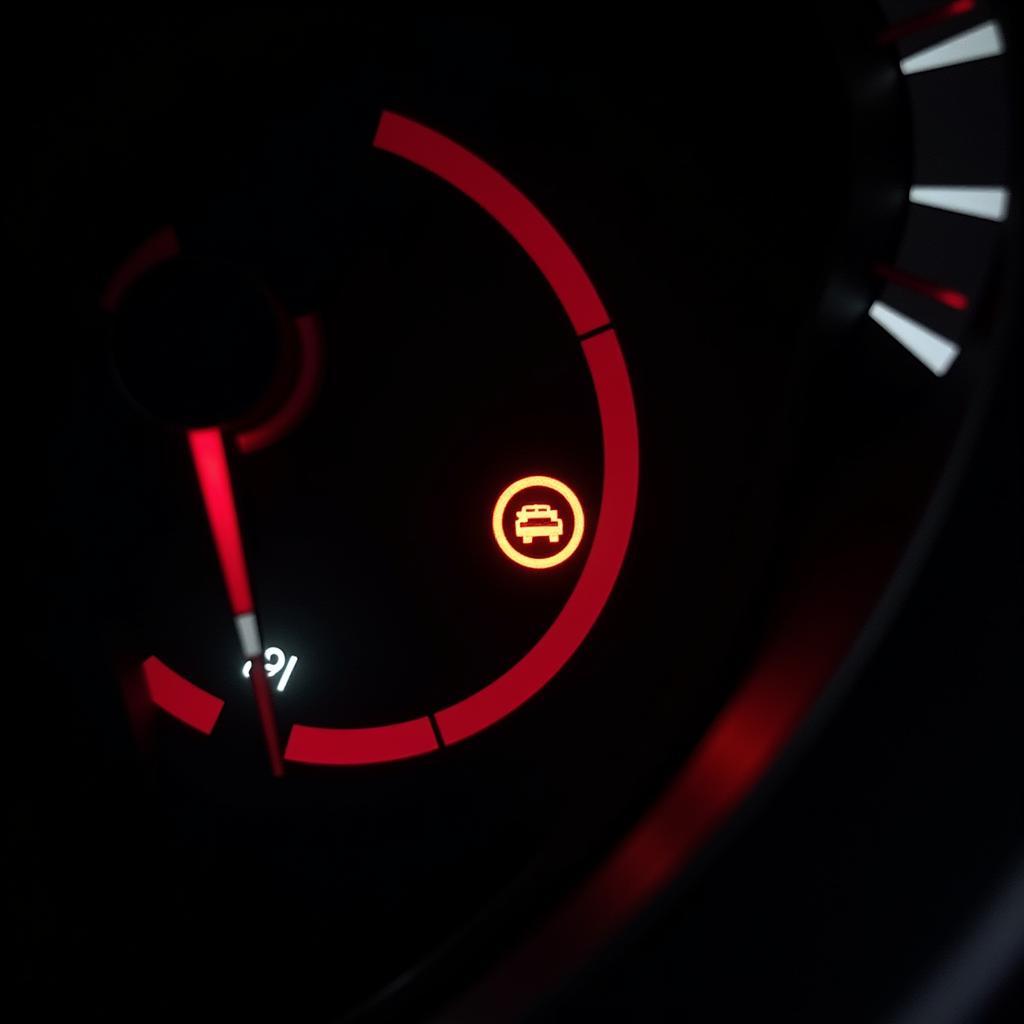Seeing a warning light pop up on your dashboard can be unsettling, especially when it concerns your Honda Civic’s brake system. The 2017 model, like many others, utilizes a complex network of components to ensure safe and efficient stopping power. If the brake system warning light illuminates, it signals a potential issue that shouldn’t be ignored. This article will guide you through the possible causes, troubleshooting steps, and solutions for addressing the brake system warning light in your 2017 Honda Civic.
Understanding the Brake System Warning Light
The brake system warning light is designed to grab your attention if it detects a problem. It usually appears as a bright symbol on your dashboard, often resembling an exclamation point within a circle or parentheses, or even the word “BRAKE”. While the appearance may vary slightly, the message is clear: your car needs attention.
Common Causes of a Brake System Warning Light
There are several reasons why your 2017 Honda Civic’s brake system warning light might be on. Here are some of the most common culprits:
- Low Brake Fluid: One of the most frequent causes is low brake fluid. Brake fluid is the lifeblood of your car’s braking system, transmitting the force from your foot on the pedal to the brakes themselves. A leak or worn brake pads can lead to low fluid levels.
- Worn Brake Pads: Brake pads are designed to wear down over time. When they become too thin, a sensor will trigger the warning light, indicating it’s time for a replacement.
- Faulty Brake Light Switch: The brake light switch is a small but vital component that activates your brake lights when you press the brake pedal. If it malfunctions, it can also trigger the brake system warning light.
- ABS Issue: Modern cars, including the 2017 Honda Civic, are equipped with Anti-lock Braking Systems (ABS). If there’s a problem with the ABS module, sensors, or wiring, the warning light might come on.
- Parking Brake Engaged: While seemingly obvious, it’s easy to overlook. If the parking brake isn’t fully released, the warning light may stay illuminated.
Troubleshooting the Brake System Warning Light
Before heading to a mechanic, there are a few things you can check yourself:
- Check Your Parking Brake: Make sure the parking brake is fully disengaged.
- Inspect Brake Fluid Level: Locate the brake fluid reservoir under the hood (refer to your owner’s manual if needed). Carefully check the fluid level, ensuring it’s between the “MIN” and “MAX” markings.
- Visual Inspection: With the car safely parked and the engine off, take a look at the visible brake components. Look for any signs of fluid leaks, worn brake pads (thin pads indicate wear), or damaged brake lines.
When to Seek Professional Help
If the warning light persists after these checks, or if you notice any of the following, it’s crucial to consult a qualified mechanic:
- Soft or Spongy Brake Pedal: This indicates a possible issue with the hydraulic pressure in the braking system.
- Grinding or Squealing Noises When Braking: These sounds are often a telltale sign of worn brake pads.
- Vehicle Pulling to One Side When Braking: This could indicate uneven brake pad wear or a problem with the brake calipers.
Remote Diagnostics and Software Solutions
Advancements in automotive technology have paved the way for remote diagnostics and software solutions, offering convenient and efficient ways to address certain car issues, including those related to the brake system.
Remote Diagnostics: Some manufacturers and specialized service providers offer remote diagnostics. By connecting your 2017 Honda Civic to a diagnostic tool, technicians can remotely access the car’s computer system, read fault codes, and identify the root cause of the brake system warning light. This can be particularly helpful in pinpointing sensor issues, ABS module problems, or other electronic faults.
Software Updates and Programming: Modern cars rely heavily on software for various functions, including brake system management. In some instances, a software glitch or outdated software version might trigger the warning light. Remote software updates or reprogramming, often facilitated through the car’s OBD-II port, can address these issues.
Expert Insight
“Ignoring a brake system warning light can be dangerous,” says John Smith, a certified automotive technician with over 15 years of experience. “It’s always best to err on the side of caution and have your car inspected by a qualified professional. Modern diagnostic tools and remote solutions have made diagnosing and addressing these issues more efficient than ever.”
Conclusion
A glowing brake system warning light in your 2017 Honda Civic is a clear sign that something needs attention. By understanding the potential causes, performing basic troubleshooting, and seeking professional help when needed, you can ensure your car’s braking system operates safely and efficiently. Remember, regular maintenance and prompt attention to warning signs are key to keeping your Honda Civic running smoothly and safely for miles to come.


